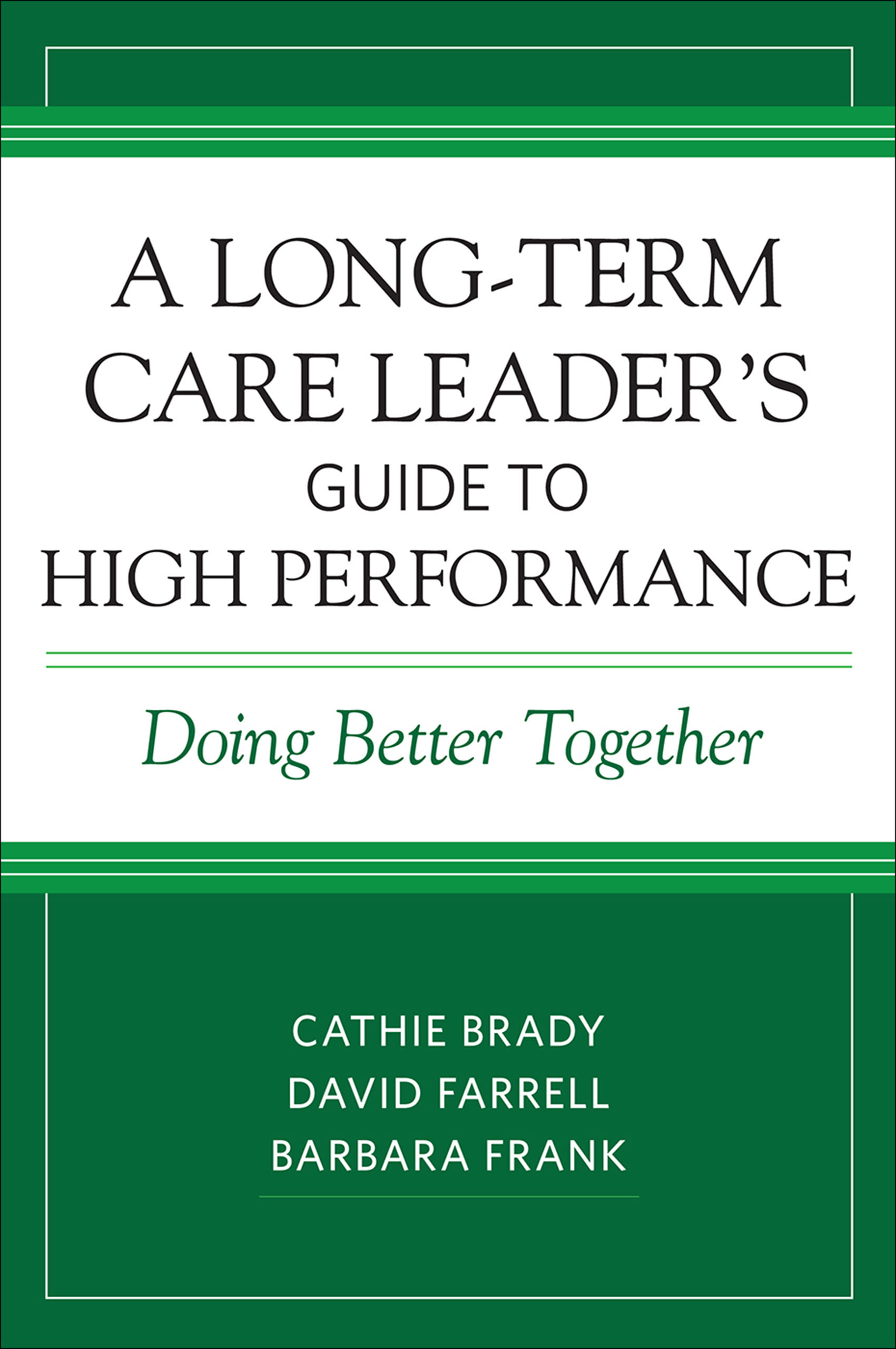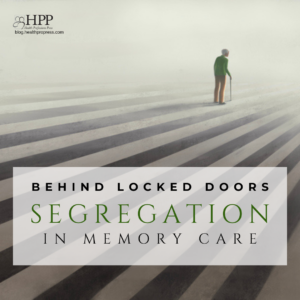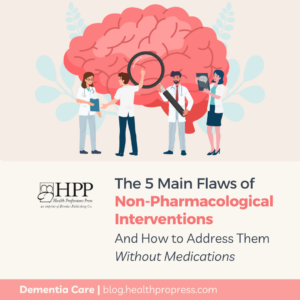
High-Performance Leadership: The Business Mandate
The Centers for Medicare and Medicaid Services (CMS) is starting to use reimbursement to influence providers and improve nursing homes’ performance. Under their new regulations, reimbursement will be based on performance, not volume. With their reimbursement policy now aligning with “highest practicable well-being,” it is imperative that you have the people, systems, and processes in place to consistently catch issues early and act to keep residents safe.
Here’s what you need to know about this new policy, and how you can be sure you’re meeting the requirements.
Portions of this post were excerpted from A Long-Term Care Leader’s Guide to High Performance: Doing Better Together by Cathie Brady, David Farrell, and Barbara Frank. Copyright © 2018 by Health Professions Press, Inc. All rights reserved.
Our field is experiencing one of the most dramatic changes in our history as CMS is now tying enforcement, public reporting, and payment together to drive improvement.
Over the decades, the Centers for Medicare and Medicaid Services (CMS) has tried various ways to positively influence nursing homes’ performance. Primarily, they have used regulations and enforcement to attempt to drive quality outcomes. Nursing homes are being held accountable for their results, not just by CMS, but also by the other healthcare providers who are coordinating care and looking very closely at nursing homes’ performance to decide which nursing homes to partner with.
CMS is starting to use reimbursement to influence providers and improve nursing homes’ performance.
Case mix reimbursement through the Medicare Prospective Payment System (PPS) is an example of paying more for people with higher-acuity needs. It was put in place to counteract the flat-rate reimbursement approach, which incentivized nursing homes to deliver the least amount of care to people and increase their length of stay in a skilled nursing facility (SNF). Now, Congress has enacted legislation tying payment to performance.
Performance-based reimbursement pays providers for best practices and best outcomes.
Our system is being driven away from reimbursement based on volume toward reimbursement based on value. In volume-based reimbursement, SNFs actually got paid more for their mistakes. The nursing home could turn a Medicaid beneficiary into a Medicare beneficiary if the resident broke a hip or developed a pressure ulcer, or if staff failed to notice the early warning signs of pneumonia or dehydration. Furthermore, the nursing home, in the past, has been rewarded when a rehospitalization (based on poor care triggering a poor outcome) qualifies the Medicaid recipient for Medicare and the home’s daily reimbursement rate for the resident triples.
Nursing homes will now have to absorb the costs of their mistakes if the mistakes lead to a higher cost of care.
Reimbursement policy is now aligning with “highest practicable well-being.” Instead of paying based on volume, where nursing homes were paid for mistakes, Medicare and Medicaid will soon pay for high performance, and nursing homes will have to absorb the costs of their mistakes if the mistakes lead to a higher cost of care.
Performance-based reimbursement drives SNFs to provide individualized preventive care and away from the old institutional model with its one-size-fits-all approach. Under performance-based payment, a provider is reimbursed for the normal costs for an episode of care. It assumes that best practices are followed. If an SNF is using an outdated approach that causes the resident’s stay to extend and increasing the cost of care, these adverse outcomes will not be reimbursed in the way they were under volume-based payment. The extra time and resources needed to fix the mistake will cost the SNF.
So, what does it mean?
The leading diagnoses of avoidable rehospitalizations from SNFs are pneumonia, congestive heart failure, change in mental status, chest pain, and urinary tract infections. These are considered potentially avoidable because clinicians agree that these conditions have early warning signs. If nursing home staff can catch the early signs and act quickly, often they can treat the person in the SNF before the condition becomes so acute as to require a hospitalization.
However, catching the early warning signs and acting on them can be very complex. It requires stable staff who know residents well, and systems for just-in-time education and communication so that staff know what they are seeing and how to communicate it to others.
Creating Prevention: People, Systems, Process
 This is where A Long-Term Care Leader’s Guide to High Performance comes in, outlining a three-part strategy focused on people, systems, and process. This approach helps SNF leaders implement changes to consistently catch issues early and act to keep residents safe—and to maintain their highest practicable well-being. Covering staff stability, high-involvement leadership, relationship building, quality improvement, care planning, and more, this blueprint for change will help you succeed in performance-based healthcare by fostering an environment that provides the right care for every resident, every day.
This is where A Long-Term Care Leader’s Guide to High Performance comes in, outlining a three-part strategy focused on people, systems, and process. This approach helps SNF leaders implement changes to consistently catch issues early and act to keep residents safe—and to maintain their highest practicable well-being. Covering staff stability, high-involvement leadership, relationship building, quality improvement, care planning, and more, this blueprint for change will help you succeed in performance-based healthcare by fostering an environment that provides the right care for every resident, every day.





Add comment